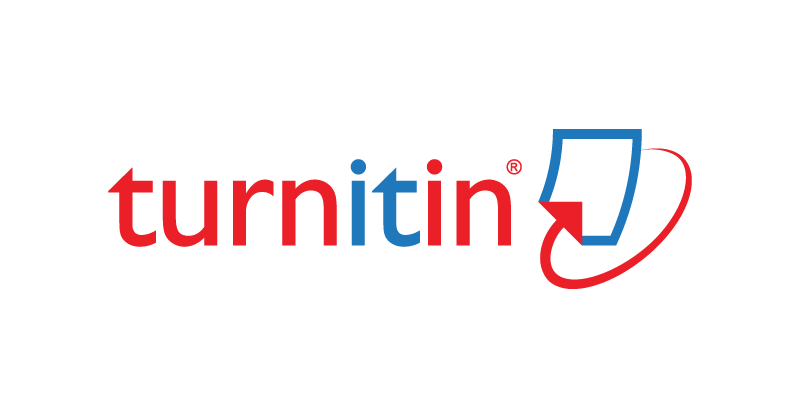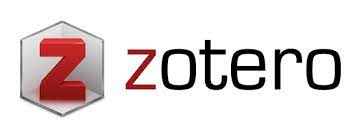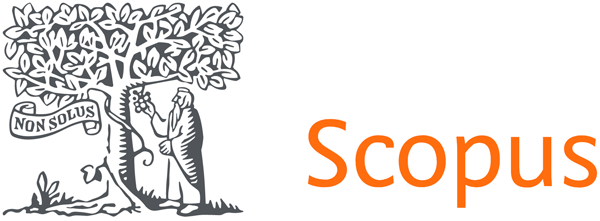Toxic Workplace, Mental Health and Employee Well-being, the Moderator Role of Paternalistic Leadership, an Empirical Study
Abstract
Based on previous research results that recognized the role of paternalistic leadership in promoting a positive work climate, this study explored the impact of a toxic work environment on the mental health and well-being of employees. We used the quantitative methodology to collect and analyze data. A sample of 108 participants from Iraqi internet service provider (ISPs) companies represented the purposive study sample. We targeted employees who experienced the COVID-19 pandemic. All data was collected through an electronic questionnaire (Google and Microsoft Forms). The research model was tested using structural equation modeling (SEM). The results showed a negative effect of the toxic workplace on the mental health of employees. This also had a negative impact on their well-being. The results also indicated that paternalistic leadership has a positive effect on reducing the impact of toxic workplace on employees' mental health. This role was more apparent in modifying the negative relationship between mental health problems and employee well-being. The results showed that workplace bullying, in particular, is less affected by paternalistic leadership practices.
References
Ahmad, A. R., & Murad, H. R. (2020). The impact of social media on panic during the COVID-19 pandemic in Iraqi Kurdistan: online questionnaire study. Journal of medical Internet research, 22(5), e19556. https://doi.org/10.2196/19556
Ahmad, S., Sohal, A. S., & Wolfram Cox, J. (2020). Leading well is not enough: A new insight from the ethical leadership, workplace bullying and employee well-being relationships. European Business Review, 32(2), 159-180. https://doi.org/10.1108/EBR-08-2018-0149
Ahmadi, P., Bakhshizadeh, A., & Balouchi, H. (2012). Studying the impact of mental health on job performance of managers and staff. Management Science Letters, 2(5), 1579-1588. https://doi.org/10.5267/j.msl.2012.05.009
Ahmed, F., Zhao, F., & Faraz, N. A. (2020). How and when does inclusive leadership curb psychological distress during a crisis? Evidence from the COVID-19 outbreak. Frontiers in Psychology, 11, 1898. https://doi.org/10.3389/fpsyg.2020.01898
Ajala, E. M. (2013). Quality of work life and workers wellbeing: The industrial social workers approach. IFE Psychologia: An International Journal, 21(2), 46-56. https://hdl.handle.net/10520/EJC141146
Akgün, N., Özdemİr, T., Yildiz, K., Cerİt, Y., & Yilmaz, Ö. (2019). The relationship between school principals’ paternalistic leadership behavior and the level of classroom teachers’ organizational ostracism. Bartın University Journal of Faculty of Education, 8(3), 1088-1105. https://doi.org/10.14686/buefad.621326
Al Khoury, M. (2022). The Relationship between a Toxic Workplace Environment, Workplace Stress, and Employee Development. Lebanese American University, https://doi.org/10.2147/RMHP.S256155
Amir, S., Archibong, M., Corbett, P., Holden, E., & Piacente, M. (2021). Employee Wellness Program Comparisons Among Private Companies.
Anderko, L., Roffenbender, J. S., Goetzel, R. Z., Millard, F., Wildenhaus, K., DeSantis, C., & Novelli, W. (2012). Peer reviewed: Promoting prevention through the affordable care act: Workplace wellness. Preventing Chronic Disease, 9. https://doi.org/10.5888/pcd9.120092
Anjum, A., Ming, X., Siddiqi, A. F., & Rasool, S. F. (2018). An empirical study analyzing job productivity in toxic workplace environments. International journal of environmental research and public health, 15(5), 1035. https://doi.org/10.3390/ijerph15051035
Anjum, A., Muazzam, A., Manzoor, F., Visvizi, A., Pollock, G., & Nawaz, R. (2019). Measuring the scale and scope of workplace bullying: An alternative workplace bullying scale. Sustainability, 11(17), 4634. https://doi.org/10.3390/su11174634
Aruoren, E. E. (2022). Job Satisfaction and Paternalistic Leadership Behaviour. Journal of Social and Management Sciences, 17(1).
Babbitt, D. G. (2019). Influences of Eastern and Western Cultures in Sport Coaching Leadership Styles: A Review of the Literature. International Journal of Coaching Science, 13(1).
Barling, J., & Frone, M. R. (2017). If only my leader would just do something! Passive leadership undermines employee well‐being through role stressors and psychological resource depletion. Stress and Health, 33(3), 211-222. https://doi.org/10.1002/smi.2697
Bart, R., Ishak, W. W., Ganjian, S., Jaffer, K. Y., Abdelmesseh, M., Hanna, S., . . . Dang, J. (2018). The assessment and measurement of wellness in the clinical medical setting: a systematic review. Innovations in clinical neuroscience, 15(09-10), 14.
Bedi, A. (2020). A meta‐analytic review of paternalistic leadership. Applied Psychology, 69(3), 960-1008. https://doi.org/10.1111/apps.12186
Bedi, A. (2021). No herd for black sheep: A meta‐analytic review of the predictors and outcomes of workplace ostracism. Applied Psychology, 70(2), 861-904. https://doi.org/10.1111/apps.12238
Bibi, M., Khan, A., Idrees, M. A., & Shariq, S. (2020). IMPACT OF PATERNALISTIC LEADERSHIP ON EMPLOYEE PSYCHOLOGICAL WELLBEING IN THE ERA OF COVID 19 PANDEMIC WITH MODERATING EFFECT OF SUSTAINABLE HR PRACTICES.
Buchanan, N. T., Settles, I. H., Wu, I. H., & Hayashino, D. S. (2018). Sexual harassment, racial harassment, and well-being among Asian American women: An intersectional approach. Women & Therapy, 41(3-4), 261-280. https://doi.org/10.1080/02703149.2018.1425030
Budak, O., & Erdal, N. (2022). The mediating role of burnout syndrome in toxic leadership and job satisfaction in organizations. South East European Journal of Economics and Business, 17(2), 1-17. https://doi.org/10.2478/jeb-2022-0011
Çetin, C., Toylan, N. V., Aydıner Çakırel, Ö., & Çakırel, Y. (2017). Paternalistic leadership and psychological well-being: The mediating role of meaningful work. FSM İlmi Araştırmalar İnsan ve Toplum Bilimler Dergisi. https://doi.org/10.16947/fsmia.372604
Chang, K., Kuo, C.-C., Quinton, S., Lee, I., Cheng, T.-C., & Huang, S.-K. (2021). Subordinates’ competence: a potential trigger for workplace ostracism. The International Journal of Human Resource Management, 32(8), 1801-1827. https://doi.org/10.1080/09585192.2019.1579246
Chaudhary, A., Islam, T., Ali, H. F., & Jamil, S. (2023). Can paternalistic leaders enhance knowledge sharing? The roles of organizational commitment and Islamic work ethics. Global Knowledge, Memory and Communication, 72(1/2), 98-118. https://doi.org/10.1108/GKMC-06-2021-0109
Cheng, C., & Ma, J. (2022). Effect of workplace ostracism on employee initiative behaviour: a chained double mediation model. Journal of Managerial Psychology(ahead-of-print). https://doi.org/10.1108/JMP-10-2021-0541
Chopra, P. (2009). Mental health and the workplace: issues for developing countries. International Journal of Mental Health Systems, 3, 1-9. https://doi.org/10.1186/1752-4458-3-4
Çİçek, b., & Aktaş, k. (2022). THE EFFECT OF SOCIAL OSTRACISM ON PSYCHOLOGICAL WELL-BEING: THE MEDIATING ROLE OF PATERNALISTIC LEADERSHIP. İnönü Üniversitesi Uluslararası Sosyal Bilimler Dergisi, 11(1), 1-17. https://doi.org/10.54282/inijoss.1064237
Coldwell, D. A. (2019). Negative influences of the 4th industrial revolution on the workplace: Towards a theoretical model of entropic citizen behavior in toxic organizations. International journal of environmental research and public health, 16(15), 2670. https://doi.org/10.3390/ijerph16152670
Daniel, T. A., & Harrison, L. (2020). Organizational Toxin Handlers: The Critical Role of HR, OD, and Coaching Practitioners in Managing Toxic Workplace Situations: Springer. ISBN: 978-3-030-51685-7
De Clercq, D., Haq, I. U., & Azeem, M. U. (2019). Workplace ostracism and job performance: roles of self-efficacy and job level. Personnel review, 48(1), 184-203. https://doi.org/10.1108/PR-02-2017-0039
Dedahanov, A. T., Bozorov, F., & Sung, S. (2019). Paternalistic leadership and innovative behavior: Psychological empowerment as a mediator. Sustainability, 11(6), 1770. https://doi.org/10.3390/su11061770
Dionisi, A. M., & Barling, J. (2018). It hurts me too: Examining the relationship between male gender harassment and observers’ well-being, attitudes, and behaviors. Journal of occupational health psychology, 23(3), 303. https://doi.org/10.1037/ocp0000124
Donaldson‐Feilder, E., Munir, F., & Lewis, R. (2013). Leadership and employee well‐being. The Wiley‐Blackwell handbook of the psychology of leadership, change, and organizational development, 155-173. https://doi.org/10.1002/9781118326404.ch8
Du, J., Ma, E., Lin, X., & Wang, Y.-C. (2022). Authentic leadership and engaging employees: A moderated mediation model of leader–member exchange and power distance. Cornell Hospitality Quarterly, 63(4), 479-489. https://doi.org/10.1177/19389655211033540
Dvorakova, Z., & Fedorova, A. E. (2014). Toxic workplaces as a factor in the reduction of the quality of work life.
Erickson, A., Shaw, B., Murray, J., & Branch, S. (2015). Destructive leadership: Causes, consequences and countermeasures. Organizational Dynamics, 44(4), 266-272. https://doi.org/10.1016/j.orgdyn.2015.09.003
Fatima, T., Bilal, A. R., Imran, M. K., & Sarwar, A. (2023). Manifestations of workplace ostracism: an insight into academics' psychological well-being. South Asian Journal of Business Studies, 12(1), 79-103. https://doi.org/10.1108/SAJBS-03-2019-0053
Fedorova, A., & Dvorakova, Z. (2014). Toxic workplaces as a fac-tor in the deterioration of employees’ health, as well as the reduction in the quality of their work life. https://doi.org/10.5593/sgemsocial2014/B12/S2.147
Feng, L., Li, J., Feng, T., & Jiang, W. (2019). Workplace ostracism and job performance: Meaning at work and family support as moderators. Social Behavior and Personality: an international journal, 47(11), 1-13. https://doi.org/10.2224/sbp.8244
Ferreira, T. D. M., de Mesquita, G. R., de Melo, G. C., de Oliveira, M. S., Bucci, A. F., Porcari, T. A., . . . Gasparino, R. C. (2022). The influence of nursing leadership styles on the outcomes of patients, professionals and institutions: An integrative review. Journal of Nursing Management, 30(4), 936-953. https://doi.org/10.1111/jonm.13592
Fraher, A. L. (2016). A toxic triangle of destructive leadership at Bristol Royal Infirmary: A study of organizational Munchausen syndrome by proxy. Leadership, 12(1), 34-52. https://doi.org/10.1177/1742715014544392
Gagné, M., & Bhave, D. (2010). Autonomy in the workplace: An essential ingredient to employee engagement and well-being in every culture. In Human autonomy in cross-cultural context: Perspectives on the psychology of agency, freedom, and well-being (pp. 163-187). Springer. https://doi.org/10.1007/978-90-481-9667-8_8
Gamian-Wilk, M., & Madeja-Bien, K. (2018). Ostracism in the Workplace. In (pp. 1-30). https://doi.org/10.1007/978-981-10-5154-8_2-1
Gauche, C., de Beer, L. T., & Brink, L. (2017). Managing employee well-being: A qualitative study exploring job and personal resources of at-risk employees. SA Journal of Human Resource Management, 15, 13. https://www.doi.org/10.4102/sajhrm.v15i0.957
Giorgi, G., Lecca, L. I., Alessio, F., Finstad, G. L., Bondanini, G., Lulli, L. G., . . . Mucci, N. (2020). COVID-19-related mental health effects in the workplace: a narrative review. International journal of environmental research and public health, 17(21), 7857. https://doi.org/10.3390/ijerph17217857
Goetzel, R. Z., Roemer, E. C., Holingue, C., Fallin, M. D., McCleary, K., Eaton, W., . . . Bartlett, J. (2018). Mental health in the workplace: A call to action proceedings from the mental health in the workplace: Public health summit. Journal of occupational and environmental medicine, 60(4), 322. https://doi.org/10.1097/JOM.0000000000001271
Gorgenyi-Hegyes, E., Nathan, R. J., & Fekete-Farkas, M. (2021). Workplace health promotion, employee wellbeing and loyalty during COVID-19 Pandemic—Large scale empirical evidence from Hungary. Economies, 9(2), 55. https://doi.org/10.3390/economies9020055
Gumbus, A., & Lyons, B. (2011). Workplace Harassment: The Social Costs of Bullying. Journal of Leadership, Accountability and Ethics, 8.
Gyamerah, S., He, Z., Asante, D., Ampaw, E. M., & Gyamerah, E. E. D. (2022). Paternalistic leadership, employee creativity, and retention: The role of psychological empowerment. International Journal of Cross Cultural Management, 22(1), 83-104. https://doi.org/10.1177/14705958221081636
Hadadian, Z., & Sayadpour, Z. (2018). Relationship between toxic leadership and job related affective well-being: The mediating role of job stress. European Online Journal of Natural and Social Sciences: Proceedings, 7(1 (s)), pp. 137-145. https://doi.org/10.1515/sbe-2016-0037
Haeruddin, M. I. M., Akbar, A., Dipoatmodjo, T. S., Kurniawan, A. W., & Abadi, R. R. (2022). The Toxicity of our City: The Effect of Toxic Workplace Environment on Employee’s Performance. International Journal of Social Science and Business, 6(2). https://doi.org/10.23887/ijssb.v6i2.45297
Hakanen, J. J., Peeters, M. C., & Schaufeli, W. B. (2018). Different types of employee well-being across time and their relationships with job crafting. Journal of occupational health psychology, 23(2), 289. https://doi.org/10.1037/ocp0000081
Harju, L. K., Rokka, J., Lopes, M. M., Airoldi, M., & Raïes, K. (2021). Employee well-being profiles during COVID-19 lockdown: a latent profile analysis of French and UK employees. Frontiers in psychology, 12, 645300. https://doi.org/10.3389/fpsyg.2021.645300
Harnois, G., & Gabriel, P. (2000). Mental health and work: Impact, issues and good practices.
Hassard, J., Cox, T., Murawski, S., De Meyer, S., Muylaert, K., Flintrop, J., & Podniece, Z. (2011). Mental health promotion in the workplace–A good practice report.
Hayat, A., & Afshari, L. (2021). Supportive organizational climate: a moderated mediation model of workplace bullying and employee well-being. Personnel review, 50(7/8), 1685-1704. https://doi.org/10.1108/PR-06-2020-0407
He, G., An, R., & Hewlin, P. F. (2019). Paternalistic leadership and employee well-being: a moderated mediation model. Chinese Management Studies, 13(3), 645-663. https://doi.org/10.1108/CMS-10-2018-0724
Hennekam, S., Richard, S., & Grima, F. (2020). Coping with mental health conditions at work and its impact on self-perceived job performance. Employee Relations: The International Journal. https://doi.org/10.1108/ER-05-2019-0211
Hernández-Torrano, D., Ibrayeva, L., Sparks, J., Lim, N., Clementi, A., Almukhambetova, A., . . . Muratkyzy, A. (2020). Mental health and well-being of university students: A bibliometric mapping of the literature. Frontiers in Psychology, 11, 1226. https://doi.org/10.3389/fpsyg.2020.01226
Hobfoll, S. E. (1989). Conservation of resources: A new attempt at conceptualizing stress. American psychologist, 44(3), 513. https://doi.org/10.1037/0003-066X.44.3.513
Hofstede, G. (1985). The interaction between national and organizational value systems [1]. Journal of management studies, 22(4), 347-357. https://doi.org/10.1111/j.1467-6486.1985.tb00001.x
Holden, R. J., Patel, N. R., Scanlon, M. C., Shalaby, T. M., Arnold, J. M., & Karsh, B.-T. (2010). Effects of mental demands during dispensing on perceived medication safety and employee well-being: a study of workload in pediatric hospital pharmacies. Research in social and administrative Pharmacy, 6(4), 293-306. https://www.doi.org/10.1016/j.sapharm.2009.10.001
Hsu, F.-S., Liu, Y.-a., & Tsaur, S.-H. (2019). The impact of workplace bullying on hotel employees’ well-being: Do organizational justice and friendship matter? International Journal of Contemporary Hospitality Management. https://doi.org/10.1108/IJCHM-04-2018-0330
Hussein, N. R., Saleem, Z. S. M., Musa, D. H., Ibrahim, N., & Naqid, I. A. (2020). Impact of COVID-19 on the medical education: experience from Kurdistan region of Iraq. Journal of Medical Education, 19(1). https://doi.org/10.5812/jme.106889.
Islam, T., Ali, M., Jamil, S., & Ali, H. F. (2021). How workplace bullying affects nurses’ well-being? The roles of burnout and passive avoidant leadership. International Journal of Human Rights in Healthcare(ahead-of-print). https://doi.org/10.1108/IJHRH-05-2021-0113
Islam, T., Sharif, S., Ali, H. F., & Jamil, S. (2022). Zooming into paternalistic leadership: evidence from high power distance culture. European Journal of Management and Business Economics(ahead-of-print). https://doi.org/10.1108/EJMBE-05-2021-0149
Jang, E., & Chen, X. (2022). How can we make a sustainable workplace? Workplace ostracism, employees’ well-being via need satisfaction and moderated mediation role of authentic leadership. Sustainability, 14(5), 2869. https://doi.org/10.3390/su14052869
Jansson, I., & Gunnarsson, A. B. (2018). Employers’ views of the impact of mental health problems on the ability to work. Work, 59(4), 585-598. https://doi.org/10.3233/WOR-182700
Jensen, P. A., & van der Voordt, T. J. (2020). Healthy workplaces: What we know and what else we need to know. Journal of Corporate Real Estate, 22(2), 95-112. https://doi.org/10.1108/JCRE-11-2018-0045
Jia, J., Zhou, S., Zhang, L., & Jiang, X. (2020). Exploring the influence of paternalistic leadership on voice behavior: A moderated mediation model. Employee Relations: The International Journal. https://doi.org/10.1108/ER-06-2019-0263
Johnson, A., Dey, S., Nguyen, H., Groth, M., Joyce, S., Tan, L., . . . Harvey, S. B. (2020). A review and agenda for examining how technology-driven changes at work will impact workplace mental health and employee well-being. Australian Journal of Management, 45(3), 402-424. https://doi.org/10.1177/031289622092229
Jones, D., Molitor, D., & Reif, J. (2019). What do workplace wellness programs do? Evidence from the Illinois workplace wellness study. The Quarterly Journal of Economics, 134(4), 1747-1791. https://doi.org/10.1093/qje/qjz023
Kanwal, I., Lodhi, R. N., & Kashif, M. (2019). Leadership styles and workplace ostracism among frontline employees. Management Research Review, 42(8), 991-1013. https://doi.org/10.1108/MRR-08-2018-0320
Kasalak, G. (2019). Toxic Behaviors in Workplace: Examining the Effects of the Demographic Factors on Faculty Members' Perceptions of Organizational Toxicity. International Journal of Research in Education and Science, 5(1), 272-282.
Lee, M. C. C., Kee, Y. J., Lau, S. S. Y., & Jan, G. (2023). Investigating aspects of paternalistic leadership within the job demands–resources model. Journal of Management & Organization, 1-20. https://doi.org/10.1017/jmo.2022.95
Leka, S., & Nicholson, P. J. (2019). Mental health in the workplace. In (Vol. 69, pp. 5-6): Oxford University Press UK. https://doi.org/10.1093/occmed/kqy111
Liu, H., & Xia, H. (2016). Workplace Ostracism: A Review and Directions for Future Research. Journal of Human Resource and Sustainability Studies, 04, 197-201. https://doi.org/10.4236/jhrss.2016.43022
Liu, Y., & Almor, T. (2016). How culture influences the way entrepreneurs deal with uncertainty in inter-organizational relationships: The case of returnee versus local entrepreneurs in China. International Business Review, 25(1), 4-14. https://doi.org/10.1016/j.ibusrev.2014.11.002
Lu, X., Yu, H., & Shan, B. (2022). Relationship between Employee Mental Health and Job Performance: Mediation Role of Innovative Behavior and Work Engagement. International journal of environmental research and public health, 19(11), 6599. https://doi.org/10.3390/ijerph19116599
Makhanya, B. (2021). The impact of employee wellness programme on employee wellness and performance: a Kwazulu-Natal Municipality case study. http://hdl.handle.net/10500/27424
Neall, A. M., & Tuckey, M. R. (2014). A methodological review of research on the antecedents and consequences of workplace harassment. Journal of Occupational and Organizational Psychology, 87(2), 225-257. https://doi.org/10.1111/joop.12059
Nunnally, J. C., & Bernstein, I. (1978). Psychometric theory mcgraw-hill new york. The role of university in the development of entrepreneurial vocations: a Spanish study, 387-405.
O'Connor, R. C., Wetherall, K., Cleare, S., McClelland, H., Melson, A. J., Niedzwiedz, C. L., . . . Scowcroft, E. (2021). Mental health and well-being during the COVID-19 pandemic: longitudinal analyses of adults in the UK COVID-19 Mental Health & Wellbeing study. The British journal of psychiatry, 218(6), 326-333. https://doi.org/10.1192/bjp.2020.212
Oliver, M. D., Baldwin, D. R., & Datta, S. (2018). Health to wellness: A review of wellness models and transitioning back to health. The International Journal of Health, Wellness and Society, 9(1), 41. https://doi.org/10.18848/2156-8960/CGP/v09i01/41-56
Page, K. M., & Vella-Brodrick, D. A. (2009). The ‘what’, ‘why’ and ‘how’ of employee well-being: A new model. Social indicators research, 90, 441-458. https://doi.org/10.1007/s11205-008-9270-3
Rai, A., & Agarwal, U. (2016). Workplace Bullying: A Review and Future Research Directions. South Asian journal of Management, 23, 28-56.
Rasool, S. F., Maqbool, R., Samma, M., Zhao, Y., & Anjum, A. (2019). Positioning depression as a critical factor in creating a toxic workplace environment for diminishing worker productivity. Sustainability, 11(9), 2589. https://doi.org/10.3390/su11092589
Rasool, S. F., Wang, M., Tang, M., Saeed, A., & Iqbal, J. (2021). How toxic workplace environment effects the employee engagement: The mediating role of organizational support and employee wellbeing. International journal of environmental research and public health, 18(5), 2294. https://doi.org/10.3390/ijerph18052294
Rim, K.-T. (2021). COVID-19 pandemic and the protection of workers’ health from disinfectant chemicals. Toxicology and Environmental Health Sciences, 13, 1-7. https://doi.org/10.1007/s13530-020-00077-z
Roemer, A., & Harris, C. (2018). Perceived organisational support and well-being: The role of psychological capital as a mediator. SA Journal of Industrial Psychology, 44(1), 1-11. https://doi.org/10.4102/sajip.v44i0.1539
Rosander, M., Hetland, J., & Einarsen, S. V. (2022). Workplace bullying and mental health problems in balanced and gender-dominated workplaces. Work & Stress, 1-20. https://doi.org/10.1080/02678373.2022.2129514
Rosander, M., Salin, D., & Blomberg, S. (2022). The last resort: Workplace bullying and the consequences of changing jobs. Scandinavian journal of psychology, 63(2), 124-135. https://doi.org/10.1111/sjop.12794
Rusdiyanto, J. (2022). The Effect of a Toxic Work Environment on Employee Engagement in the Digital Era and Society 5.0. Paper presented at the 19th International Symposium on Management (INSYMA 2022). https://doi.org/10.2991/978-94-6463-008-4_69
Ryde, G. C., Gilson, N. D., Burton, N. W., & Brown, W. J. (2013). Recruitment rates in workplace physical activity interventions: characteristics for success. American Journal of Health Promotion, 27(5), e101-e112. https://doi.org/10.4278/ajhp.120404-LIT-187
Sabharwal, M., Kiel, L. D., & Hijal-Moghrabi, I. (2019). Best practices in local government wellness programs: the benefits of organizational investment and performance monitoring. Review of Public Personnel Administration, 39(1), 24-45. https://doi.org/10.1177/0734371X166828
Saepudin, N. L., & Sary, F. P. (2022). Employee Engagement: How Toxic Workplace Environment and Job Burnout as a Mediation Variable Influence It?
Salin, D. (2008). Organisational responses to workplace harassment: An exploratory study. Personnel review, 38(1), 26-44. https://doi.org/10.1108/00483480910920697
Salin, D. (2021). Workplace bullying and gender: An overview of empirical findings. Dignity and inclusion at work, 331-361. https://doi.org/10.1007/978-981-10-5338-2_12-1
Sarangi, A., Kim, D., & Rafael, J. (2022). The mental health impact of work from home: A literature review. The Southwest Respiratory and Critical Care Chronicles, 10(45), 10-18. https://doi.org/10.12746/swrccc.v10i45.1085
Sarfraz, M., Qun, W., Sarwar, A., Abdullah, M. I., Imran, M. K., & Shafique, I. (2019). Mitigating effect of perceived organizational support on stress in the presence of workplace ostracism in the Pakistani nursing sector. Psychology research and behavior management, 839-849. https://doi.org/10.2147/PRBM.S210794
Saunders, P., Huynh, A., & Goodman-Delahunty, J. (2007). Defining workplace bullying behaviour professional lay definitions of workplace bullying. International journal of law and psychiatry, 30, 340-354. https://doi.org/10.1016/j.ijlp.2007.06.007
Shetty, A., & B V, N. (2017). Workplace Harassment among employees: An exploratory study. Archives of Medicine and Health Sciences, 5. https://doi.org/10.4103/amhs.amhs_100_17
Shiuan, C., Boer, D., Chou, L.-F., Huang, M.-P., Yoneyama, S., Shim, D., . . . Tsai, C.-Y. (2014). Paternalistic leadership in four East Asian societies: Generalizability and cultural differences of the triad model. Journal of Cross-Cultural Psychology, 45(1), 82-90. https://doi.org/10.1177/0022022113490070
Sierk, A., Travers, E., Economides, M., Loe, B. S., Sun, L., & Bolton, H. (2022). A New Digital Assessment of Mental Health and Well-being in the Workplace: Development and Validation of the Unmind Index. JMIR Mental Health, 9(1), e34103. https://doi.org/10.2196/34103
Somani, R., Muntaner, C., Smith, P., HE, M., & Velonis, A. J. (2022). Increased workplace bullying against nurses during COVID-19: a health and safety issue. Journal of Nursing Education and Practice, 12(9), 47-53. https://doi.org/10.5430/jnep.v12n9p47
Sprigg, C. A., Niven, K., Dawson, J., Farley, S., & Armitage, C. J. (2019). Witnessing workplace bullying and employee well-being: A two-wave field study. Journal of occupational health psychology, 24(2), 286. https://doi.org/10.1037/ocp0000137
Stuber, F., Seifried-Dübon, T., Rieger, M. A., Gündel, H., Ruhle, S., Zipfel, S., & Junne, F. (2021). The effectiveness of health-oriented leadership interventions for the improvement of mental health of employees in the health care sector: a systematic review. International archives of occupational and environmental health, 94, 203-220. https://doi.org/10.1007/s00420-020-01583-w
Sungur, C., Özer, Ö., Saygili, M., & Uğurluoğlu, Ö. (2019). Paternalistic leadership, organizational cynicism, and intention to quit one’s job in nursing. Hospital topics, 97(4), 139-147. https://doi.org/10.1080/00185868.2019.1655509
Suter, J., Kowalski, T., Anaya-Montes, M., Chalkley, M., Jacobs, R., & Rodriguez-Santana, I. (2020). The impact of moving to a 12h shift pattern on employee wellbeing: A qualitative study in an acute mental health setting. International journal of nursing studies, 112, 103699. https://doi.org/10.1016/j.ijnurstu.2020.103699
Tu, C.-K., & Luo, B. (2020). Paternalistic leadership and pro-social rule breaking: The moderating roles of psychological empowerment and leader-member exchange. Human Systems Management, 39(1), 93-103. https://doi.org/10.3233/HSM-190531
Tuzovic, S., & Kabadayi, S. (2021). The influence of social distancing on employee well-being: a conceptual framework and research agenda. Journal of Service Management, 32(2), 145-160. https://doi.org/10.1108/JOSM-05-2020-0140
Ugurluoglu, O., Aldogan, E. U., Turgut, M., & Ozatkan, Y. (2018). The effect of paternalistic leadership on job performance and intention to leave the job. Journal of Health Management, 20(1), 46-55. https://doi.org/10.1177/0972063417747700
Ünler, E., & Kılıç, B. (2019). Paternalistic leadership and employee organizational attitudes: the role of positive/negative affectivity. Sage Open, 9(3), 2158244019862665. https://doi.org/10.1177/215824401986266
van Zoonen, W., Sivunen, A., Blomqvist, K., Olsson, T., Ropponen, A., Henttonen, K., & Vartiainen, M. (2021). Factors influencing adjustment to remote work: Employees’ initial responses to the COVID-19 pandemic. International journal of environmental research and public health, 18(13), 6966. https://doi.org/10.3390/ijerph18136966
Vander Elst, T., Van den Broeck, A., De Cuyper, N., & De Witte, H. (2014). On the reciprocal relationship between job insecurity and employee well‐being: Mediation by perceived control? Journal of occupational and organizational psychology, 87(4), 671-693. https://doi.org/10.1111/joop.12068
Wang, Z., Zaman, S., Rasool, S. F., Zaman, Q. u., & Amin, A. (2020). Exploring the relationships between a toxic workplace environment, workplace stress, and project success with the moderating effect of organizational support: Empirical evidence from Pakistan. Risk management and healthcare policy, 1055-1067. ished 7 August 2020 Volume 2020:13 Pages 1055—1067. DOI https://doi.org/10.2147/RMHP.S256155
Węziak-Białowolska, D., Białowolski, P., & McNeely, E. (2020). The impact of workplace harassment and domestic violence on work outcomes in the developing world. World Development, 126, 104732. https://doi.org/10.1016/j.worlddev.2019.104732
Yahaya, A., Ing, T. C., Lee, G. M., Yahaya, N., Boon, Y., Hashim, S., . . . Jesus, S. (2012). The impact of workplace bullying on work performance. Archives Des Sciences, 65(4), 18-28.
Yao, Z., Zhang, X., Luo, J., & Huang, H. (2020). Offense is the best defense: the impact of workplace bullying on knowledge hiding. Journal of Knowledge Management, 24(3), 675-695. https://doi.org/10.1108/JKM-12-2019-0755
Yong, A. G., & Pearce, S. (2013). A beginner’s guide to factor analysis: Focusing on exploratory factor analysis. Tutorials in quantitative methods for psychology, 9(2), 79-94. https://doi.org/10.20982/tqmp.09.2.p079
Yongyue, Z., Yuan, M., Chenhui, O., & Minyu, G. (2022). Paternalistic leadership and craftsmanship of manufacturing employees: influence of job involvement and team positive emotional climate. Journal of Systems & Management, 31(1), 89. https://doi.org/10.3969/j.issn.1005-2542.2022.01.008
Yu, J., Park, J., & Hyun, S. S. (2021). Impacts of the COVID-19 pandemic on employees’ work stress, well-being, mental health, organizational citizenship behavior, and employee-customer identification. Journal of Hospitality Marketing & Management, 30(5), 529-548. https://doi.org/10.1080/19368623.2021.1867283
Zhang, S., & Shi, Q. (2017). The relationship between subjective well-being and workplace ostracism: The moderating role of emotional intelligence. Journal of Organizational Change Management. https://doi.org/10.1108/JOCM-07-2016-0139
Zheng, X., Shi, X., & Liu, Y. (2020). Leading teachers’ emotions like parents: Relationships between paternalistic leadership, emotional labor and teacher commitment in China. Frontiers in Psychology, 11, 519. https://doi.org/10.3389/fpsyg.2020.00519
Copyright (c) 2023 Journal of Applied Business and Technology

This work is licensed under a Creative Commons Attribution-ShareAlike 4.0 International License.




















